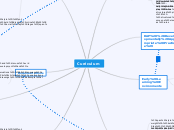
Provides a method for learning and development in all domians
Types of play
free unstructured play - imaginative, no clear rules
structured play - structured by someone else, has rules
Describes an approach to education that guides educators in their everyday practice
3 Key Factors
Age Appropriate - what is best for most children of a particular age
Individually Appropriate - what is best for a specific child's development
Culturally Appropriate - What is most relevant to and respectful of the child and
the child’s family, neighborhood, and community
Value of Learning Centres
encourages children to explore and be creative
Logical Arrangement
art/creative area, blocks, drama area, individual centres
Step 1: Observe & Document
a focus on children's strengths and abilities
Step 2: Assessment, Evaluate & Analyze
learning about children's interest, experiences, and questions
Step 3: PLAN
selecting, strategies, materials, and experiences
Step 4: Implement/Do
educators take the role of observer, recorder, provocateur throughout play
Step 5: Review & Reflect
observing to evaluate effectiveness of plans and making new goals
Smilansky's Cognitive Stages of PLay
Functional Play - children moving around and exploring materials
Symbolic Play
Constructive Play - manipulate objects to construct or create, have a definite plan for exploration, children have power
Dramatic Play - role playing and/or make-believe, act out ideas and feelings using props
Sociodramatic Play - Objects can be used for something other than the
intended use
Games with Rules - part of the play of school-
aged children and beyond
Parten's Social Play Stages
Unoccupied Behaviour - child is not engaged in play
Onlooker Behaviour - observes other children play, does not join
Solitary Play - plays alone, does not pay attention to other children
Parallel Play - children sit near each other, using the same toys but play individually
Associative Play - children interact and share materials
Cooperative Play - children share materials, work together to create a theme and storyline for the play
gather, share, and discuss evidence of
development and learning with parent
written observations
language samples
children's constructions
drawings
attempts at writing
materials with no specific set of directions that can be used alone or combined with other materiasl
baskets, stones, sticks, large tubes, popsicle sticks, pompoms, etc.
improves children development/skills
Emergent
Builds on children's interests and development
offers opportunities for variety of experiences
(indoors/outdoors, quiet/active, group/individual)
Reggio
the relationships both within and between groups of children, teachers and families, but within the context of a continuing dialogu
Montessori
Maria Montessori first worked with children
with developmental disabilities. Children develop through
“sensitive periods” when they are ready for certain developmental achievements